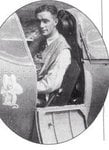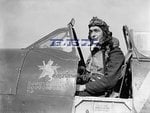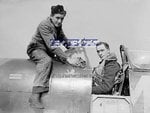Charles Detheridge
Recruit
Greetings
As one who has just joined this forum - and will probably produce a number of ****-ups, - could I ask if anyone has discovered the identity of the Spitfire V flown by Don Kingaby (hopefully shown in the attached photo if I have attached it) - the emblem seems to be something like either a cartoon lion or baboon - but I could be wrong with that as well.
Any comments / thoughts / insults accepted!

Charles
Charles Detheridge
Suffolk UK
As one who has just joined this forum - and will probably produce a number of ****-ups, - could I ask if anyone has discovered the identity of the Spitfire V flown by Don Kingaby (hopefully shown in the attached photo if I have attached it) - the emblem seems to be something like either a cartoon lion or baboon - but I could be wrong with that as well.
Any comments / thoughts / insults accepted!
Charles
Charles Detheridge
Suffolk UK





